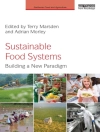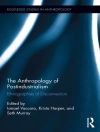How can we know if the peace that has been established following a civil war is a stable peace?More than half of all countries that experienced civil war since World War II have suffered a relapse into violent conflict, in some cases more than once. Meanwhile, the international community expends billions of dollars and deploys tens of thousands of personnel each year in support of efforts to build peace in countries emerging from violent conflict. This book argues that efforts to build peace are hampered by the lack of effective means of assessing progress towards the achievement of a consolidated peace. Rarely, if ever, do peacebuilding organizations and governments seek to ascertain the quality of the peace that they are helping to build and the contribution that their engagement is making (or not) to the consolidation of peace. More rigorous assessments of the robustness of peace are needed. These assessments require clarity about thecharacteristics of, and the requirements for, a stable peace. This in turn requires knowledge of the local culture, local history, and the specific conflict dynamics at work in a given conflict situation. Better assessment can inform peacebuilding actors in the reconfiguration and reprioritizationof their operations in cases where conditions on the ground have deteriorated or improved. To build a stable peace, it is argued here, it is important to take the measure of peace.
Richard Caplan
Measuring Peace [PDF ebook]
Principles, Practices, and Politics
Measuring Peace [PDF ebook]
Principles, Practices, and Politics
购买此电子书可免费获赠一本!
语言 英语 ● 格式 PDF ● 网页 176 ● ISBN 9780192538338 ● 出版者 OUP Oxford ● 发布时间 2019 ● 下载 3 时 ● 货币 EUR ● ID 7037318 ● 复制保护 Adobe DRM
需要具备DRM功能的电子书阅读器












